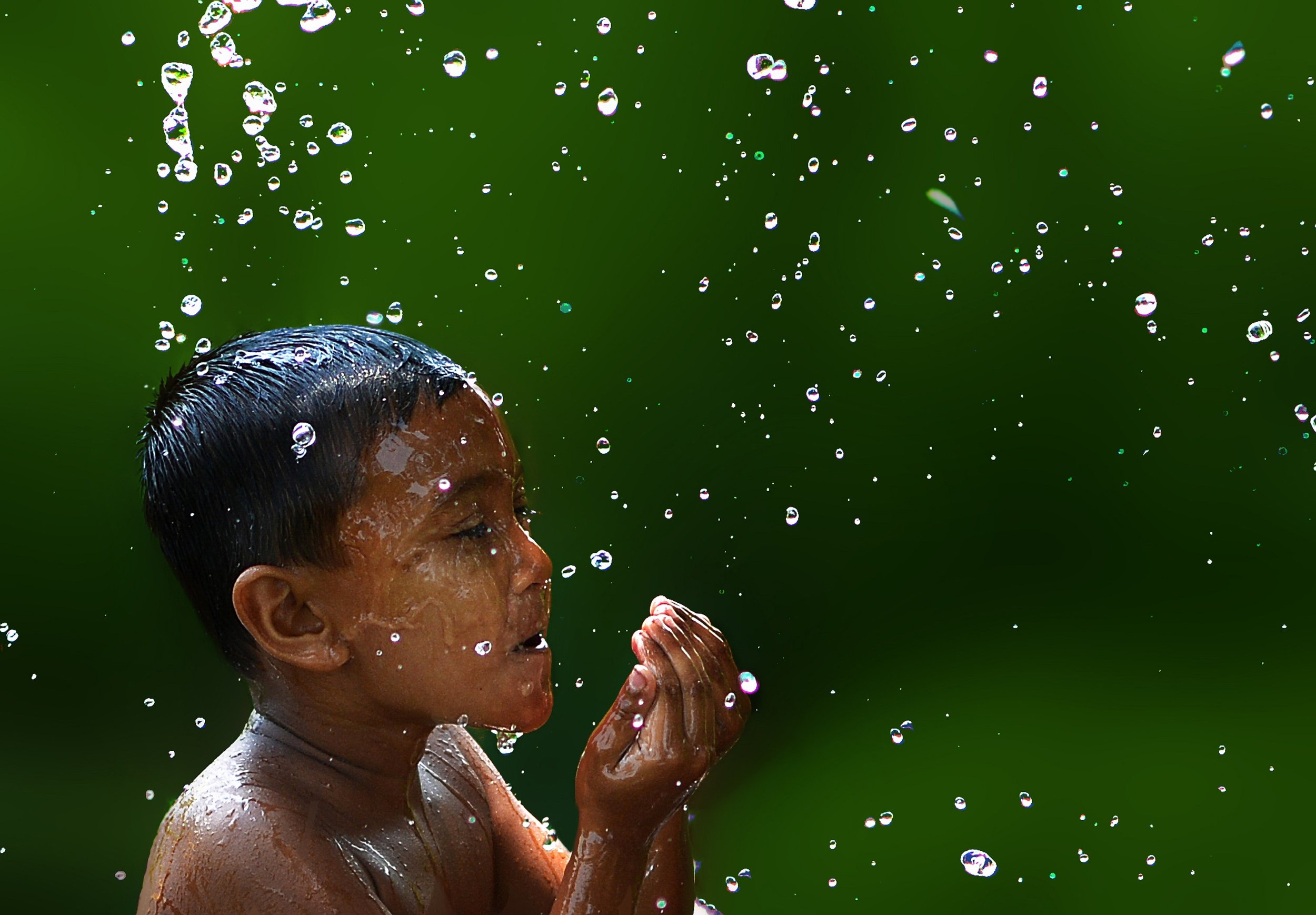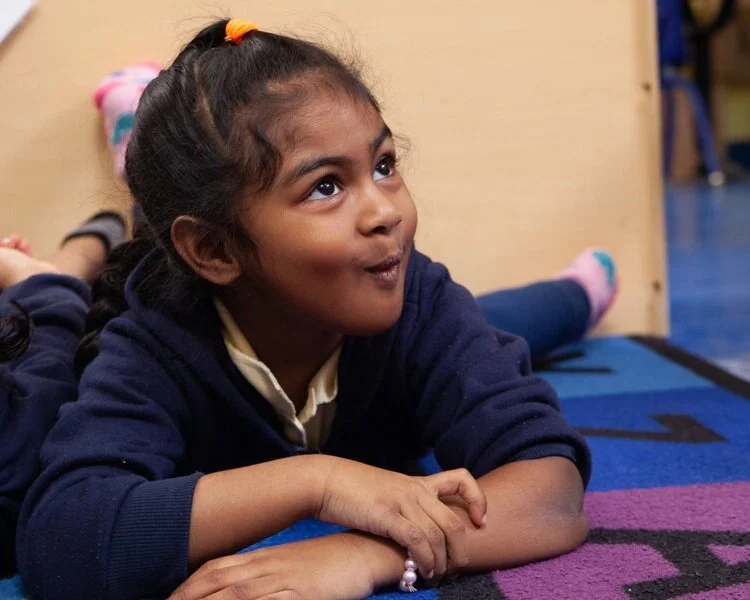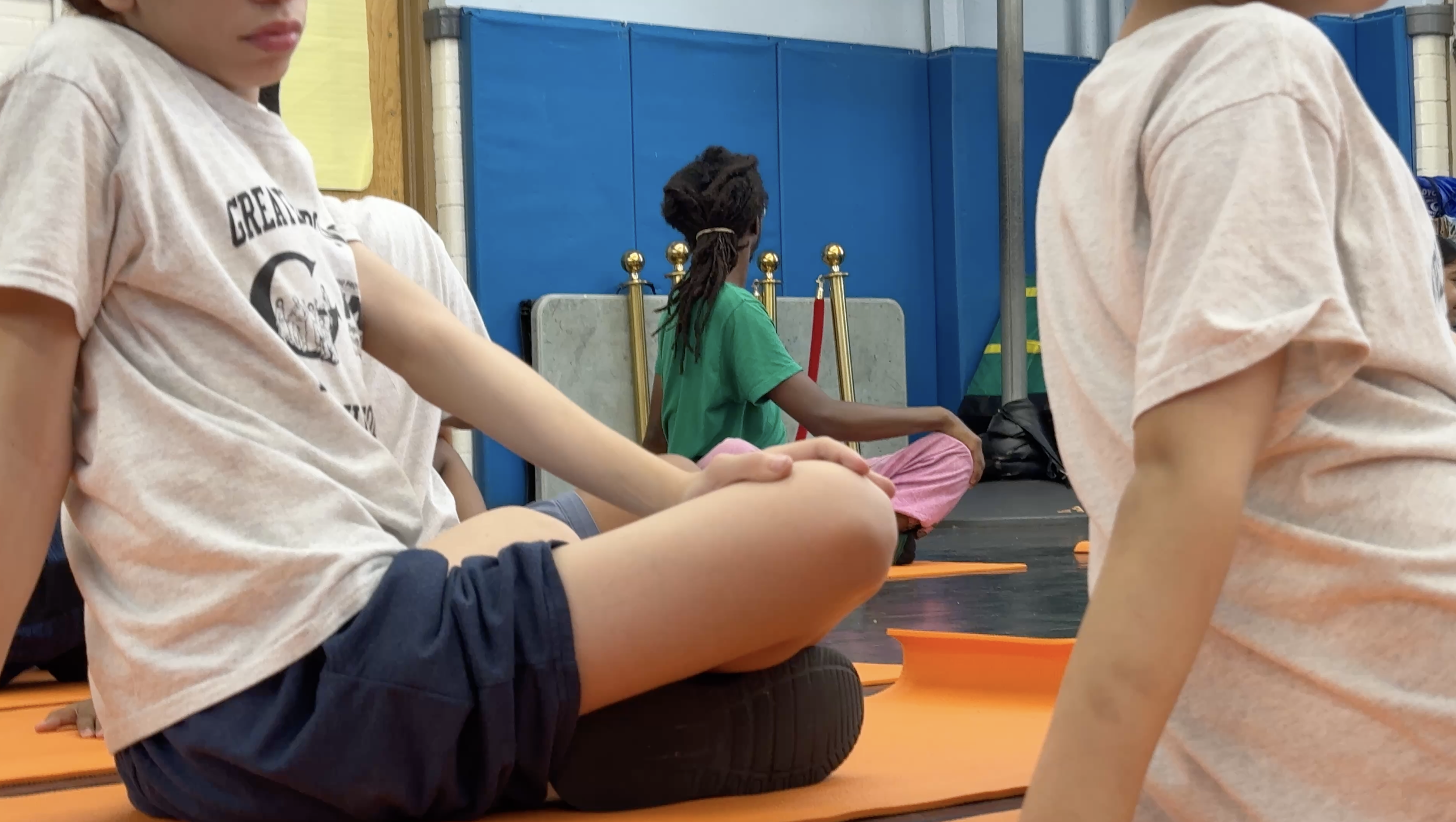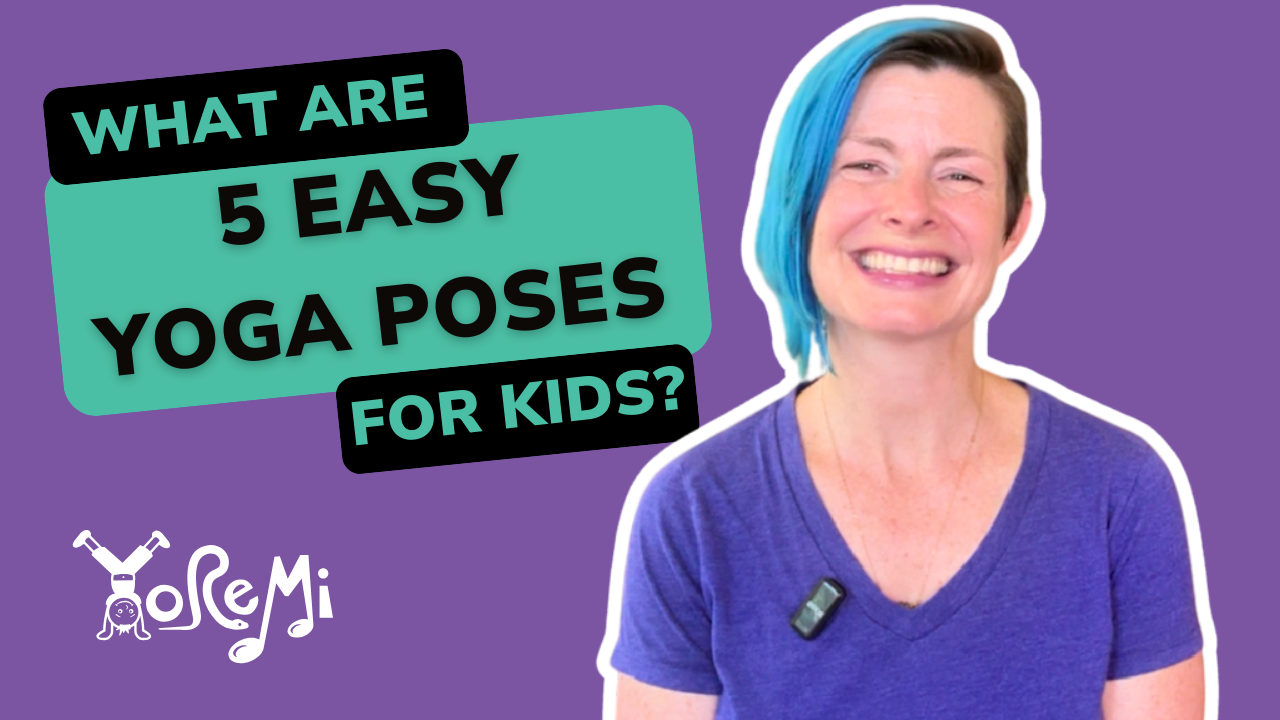15 Mindful Water-Themed Activities Using Kids Musical Yoga in the Classroom
Water accounts for 60% of most adult bodies and as high as 78% in babies — we are literally made of water! It covers 70% of the earth’s surface and is one of the most common substances on our planet. This resource nurtures all life but is often taken for granted.
Early Education Classroom Activities that Explore Water and Water Conservation
There are tons of ways to explore water, water habitats and water animals through music, yoga and mindfulness. Whether out in nature or exploring water activities for preschoolers indoors, using musical yoga and mindfulness can foster an engaging environment for celebrating the importance and benefits of water.
Because we love water so much, we’ve compiled a list of 15 awesome water-themed musical yoga and mindfulness activities to try with students. These fun activities for preschoolers and early education classrooms can even incorporate STEM themes to learn about the water cycle and water’s role in photosynthesis!
We come from water, and floating in the the bath or ocean connects us to the feelings of floating in our mother’s womb. Most of us experience water as a source of calm, relaxation, nurturing and healing.
In 1993, the United Nations General Assembly designated March 22 as the first World Water Day. On this day, children across the globe are learning about water, why it is important and what we can do to conserve and protect this resource.
Here are some of our favorite musical yoga and mindfulness activities to celebrate water in your classroom!
First, we will celebrate water by traveling over it in boats, canoes, gondolas, and pirate ships…
Which is your favorite form of water transportation?
1. Try Boat Pose for kids
This traditional yoga pose (also known as navasana) is a great way to bring music and fun into a yoga class with children. Boat pose for children requires abdominal strength and it can be tough, for both kids and adults, to hold this one for a long time.
Musical Yoga Tip: if you turn on the fun singing a rendition of “Row, row, row your boat” you may find it actually gets easier… really, try it!
The are lots of variations of boat pose, just like there are lots of different boats. Sing along with our Boat Pose for Kids video below to practice this and lots of other children’s yoga poses in one fun activity.
As a follow up, ask children what type of boat they would like to make and create some new poses together!
2. Challenge the classroom with Bow Pose using “Go Go Gondola!”
In Venice, Italy there are no roads! Instead of cars, people travel on narrow canals in special boats called gondolas. Gondola pose (Bow Pose for kids) strengthens the muscles along the spine while lengthening the front side of the body and opening the chest and shoulders.
We reach our hands behind us to grab our feet, which strengthens proprioception (our non-visual knowledge of where our body is in space) and supports sensory integration. Laying on our belly also stimulates and regulates our digestive system!
3. Try a Chair Pose variation for kids with “Puddle Jumper”
A puddle jumper (also known as a pontoon plane) is a special plane that flies in the sky but also floats on the water! Perfect for lake landings or sea departures, we make this aircraft with our bodies by combining chair pose with a toe balance. It is a fun yoga pose, for sure!
4. Have fun with yoga partner poses singing “Yo Ho Pirate Ship”
Once children have had lots of experience practicing solo yoga poses, you can add a social-emotional learning component by introducing partner poses. Partner poses encourage students to trust each other, and help them further develop communication skills.
Work together to create a pirate ship, practicing wide-legged forward fold while singing our fun pirate song!
5. Promote teamwork with another partner pose… in a Canoe!
Canoe Pose is another fun partner yoga pose to try as we traverse bodies of water together. Every adventure is so much fun with two… so find a partner and make a canoe!
In this fun partner Boat Pose variation, children build stability, core strength and balance while negotiating, supporting each other and working as a team.
Celebrate marine life with Underwater-themed animal yoga
Once we’ve warmed up with water travel, we can jump in and meet some of the animals that live beneath the waves! Celebrating water “under the sea” provides a platform to explore marine life, ecosystems and all of the special ways we can care for life underwater.
6. Explore marine life and sing along to “What Do You See in the Sea?”
The most engaging activities for children encourage them to be collaborators in service of the lesson. This energetic sing-along song, “What do You See in the Sea?” gives children the opportunity to share their ideas and even make up their own yoga poses to represent sea animals. At the same time, it is a fun and multi-modal way to teach children about animals that live in the water.
Underwater-Themed Classroom Activity: Freeze Game!
Once you have made all the animal poses, try incorporating them into a yoga freeze game. Invite children to move around the room while you play water music.
When the music stops, they freeze, turn into another animal and move again when the music starts.
This is more than just a fun game - children are moving their bodies while learning spatial awareness, self-regulation, and teamwork!
***Pro tip: if you love underwater themed poses, consider incorporating this Underwater Yoga Adventure into your lesson plan. (22 minute video)
7. Try more ocean animal yoga and do Dolphin Pose!
Dolphin Pose is basically is Downward Facing Dog on our forearms, which makes it a wonderful alternative for friends that have hand or wrist injuries or weakness. Add in a few dolphin push-ups to amp up the fun while building tremendous core strength and stability.
Remember, dolphins are playful creatures so make it a little silly with a dolphin laugh or even adding some jump switches with the legs. Eventually, a strong dolphin will be your foundation for advanced inversions like forearm stand and scorpion!
8. Discuss the largest animal in on Earth with “Yes, I Whale”
Did you know that the blue whale is the largest animal that ever lived on earth? Even larger than the dinosaurs, it’s tongue alone weighs as much as an elephant!
There are as many variations of this pose as there are types of whales - try them all!
Reach your arms wide to make the enormous blue whale.
Interlace your fingers behind your back and stretch your arms away from your body to make an orca fin.
Reach your arms forward, interlace your fingers and point your index fingers to make a narwhal.
Bend your elbows and interlace your fingers behind your head to make a beluga or white whale.
9. Release chest and shoulder tension with “Slippery Fish”
Guppies and blowfish and tetras…oh my! When you ask a kids about animals that live in the water, fish is usually the most common answer. Fish pose is a lovely heart opener that stretches the front of the body and opens the chest and shoulders.
If you don’t have space in your classroom for everyone to do a full fish pose, you can sing along to Slippery Fish for a seated musical movement activity.
- WAIT! What happens if a student wants to suggest an animal off-theme? -
Every once in a while, a kid might suggest a tiger…In Yo Re Mi we say yes to that child’s idea and turn that tiger into a tiger fish! In early education settings, teachers often think they have to teach children by making them right or wrong.
It is more important to encourage kids to express themselves by valuing their creative contributions even if they may not be technically correct.
Ask that child to help the class decide what their tiger fish looks like, sounds like, how it moves…When we inspire children to use their imagination, we cultivate their ability to think outside the box and have confidence in their ideas. In theater improvisation, we play a game called “Yes, and…”
Try starting every response to a child’s idea with that response and watch their creativity blossom. Read more about the benefits of letting children take the lead.
Discuss water diversity with Lake & River-themed Musical Yoga Activities
We’ve been talking a lot about animals that live in the oceans, but what about animals that live in lakes and rivers? While water is one of our most abundant resources, over 99% of the water on earth is unusable by humans and many other living things.
10. Duck, Duck, Duck, Duck…Fish!
Over 96% of water on earth is saltwater and most freshwater is trapped in icecaps and glaciers. Only 0.3% of our freshwater is found on the surface of lakes, rivers and swamps.
When we break it down like that, it’s a good reminder to conserve this valuable resource. We can turn off the water while brushing our teeth, take short showers instead of baths, and only run the dishwasher when it’s full. Do it for the ducks!
11. Explore water using sign language, singing “Peace Like A River”
Speaking of freshwater, humankind has been using the water from rivers and streams for thousands of years. Early civilizations developed along rivers and we continue to use rivers for everything from travel to bathing, to farming to creating hydraulic energy and more!
We use sign language when we sing “Peace Like a River” and often invite the children to make up their own verses and signs for other bodies of water.
12. Release energy and “Jump in the Water”!
This water activity is perfect for days you have a high-energy group of kids trapped inside due to snow or cold weather. It also works really well to prepare for transitions or as a brain-break in between learning activities.
At the beginning of the year, when you are learning children’s names, you can do this at your morning meeting or at circle time. Give each child a chance to jump in the middle of the circle while you sing this song, adding their name.
Explore more benefits of water
13. Discover how water helps plants “Grow!”
Just as humans and animals depend on water to live and grow, plants use water to stay alive too! Even the cactus in the dry, hot desert stores and conserves tons of water to survive.
Explore water by learning how it supports each phase of the plant seed cycle from germination all the way to pollination and seed spreading.
To celebrate this cycle and the value of water, sing and move along with “Grow.” This musical yoga activity combines a balancing squat, chair pose, and tree pose with a fun twist!
14. Promote calm and breath awareness… “Go With the Flow”
Since our bodies are made of water, could we practice being more like water? Soft and flexible while also strong and powerful, water encounters obstacles and goes around them or wears them down with persistence and time.
Sometimes when reality deviates from our expectations, we feel frustrated and upset. Both children and adults tend to get frazzled or stressed when the unexpected happens. Our yoga practice reminds us to become aware of our emotions and breathing in those moments.
When we tune in, we create space for the present moment, and often a solution will present itself. We could all take a lesson from water and learn to go with the flow.
15. Help the class wind down with a guided Ocean Breathing Exercise and Wave Relaxation
At the end of every Yo Re Mi class, we always have at least 5 minutes of relaxation. This allows our bodies and minds to integrate all the learning that has taken place and moves us into deeper connection with ourselves. We can use visualizations to still and calm the mind.
Water-themed visualizations are especially effective for young children as they can help us achieve deep relaxation while allowing us to focus on calming and restful imagery.
One of yoga's most common breathing tools, Ocean Breathing (also known as Ujjayi or Victorious Breath) combines deep breathing with the sound of the ocean to create calm, focus, clarity and overall well-being. We can use Ocean Breathing to energize while we practice yoga poses, and also to calm and focus the mind before relaxation.
Give children the opportunity to draw or share how they feel after the relaxation. Or you can pass around a breathing ball or talking stick and have everyone take a turn to share how they are feeling.
Remember: The more you practice stillness, the easier it will be for both you and the children to settle into calm. You’ll soon will notice children quieting more quickly and staying for longer periods of time.
If you’d like more tips on how to help children relax and reach their calm, read our article on how to transition kids to relaxation or reach out to us to request more information about bringing Yo Re Mi’s music, movement and mindfulness enrichment program to your classroom or school.
Which water-themed activity will you try in the classroom first? Be sure to subscribe to our YouTube channel for free 24/7 access to children’s music, yoga and mindfulness videos for home or the classroom.
Share this post:
water themed kids musical yoga and mindfulness activities for early education classrooms. Perfect for the water unit in your curriculum or celebrating world water day.















